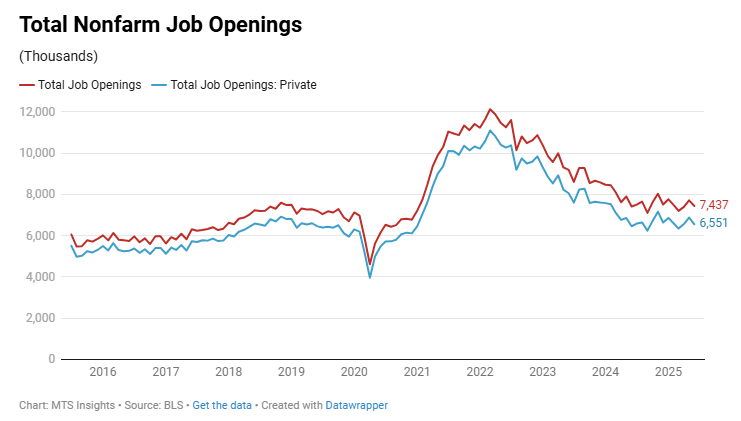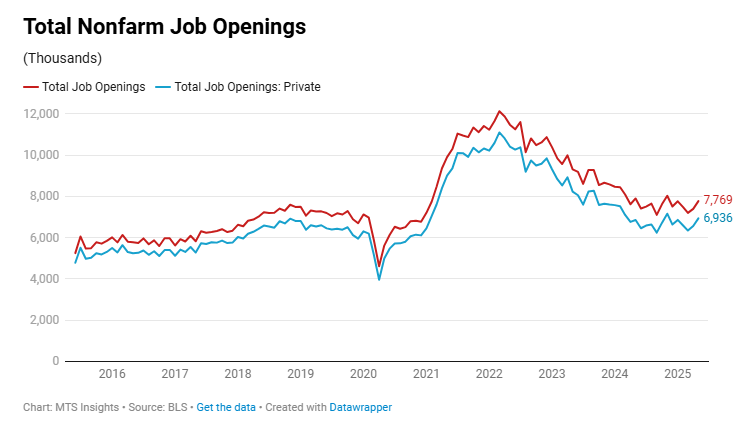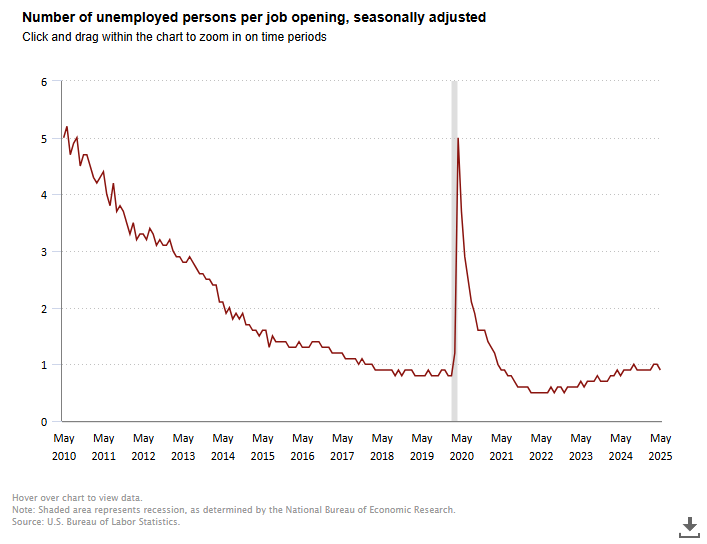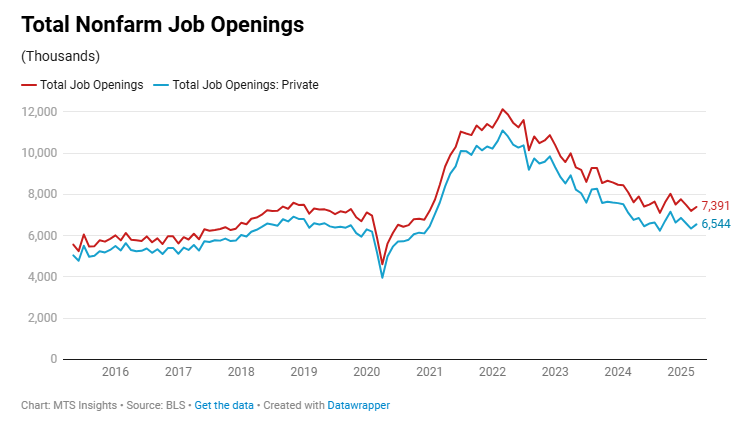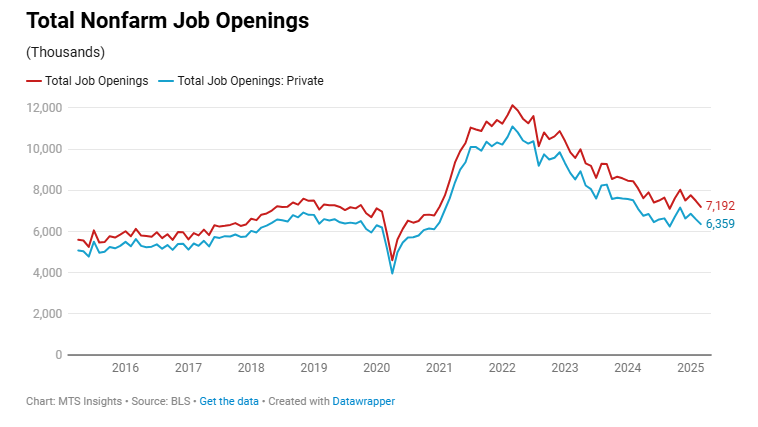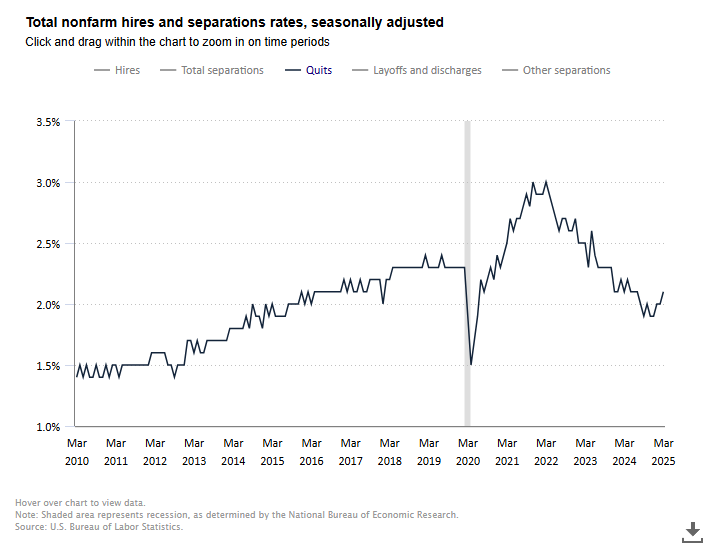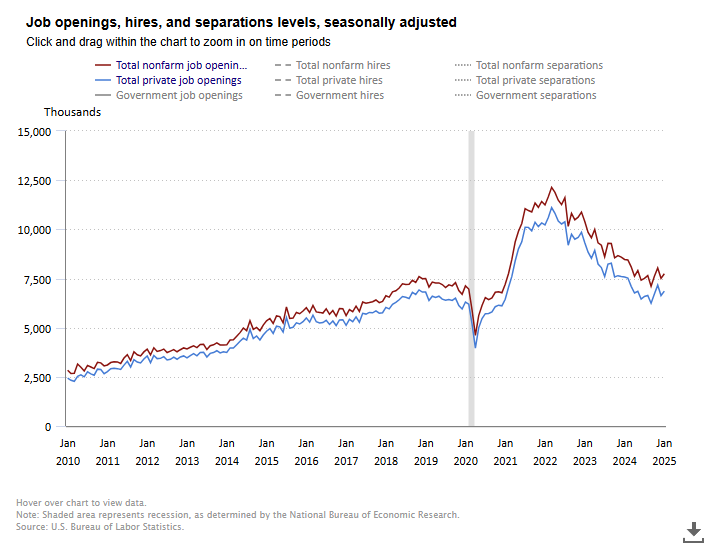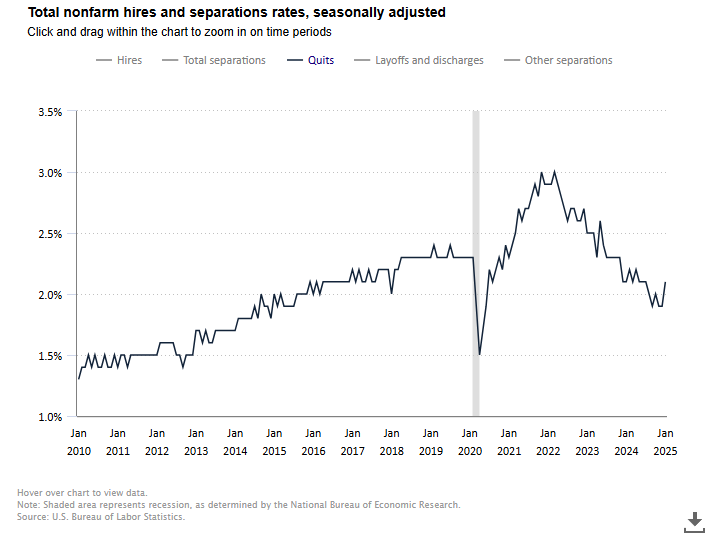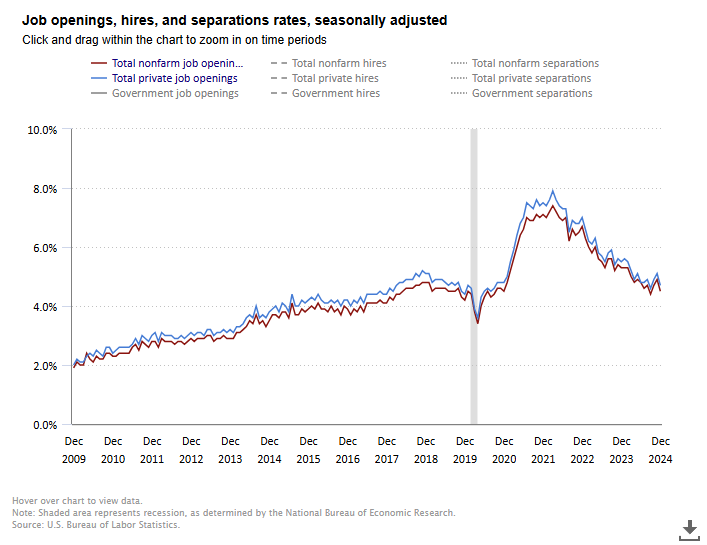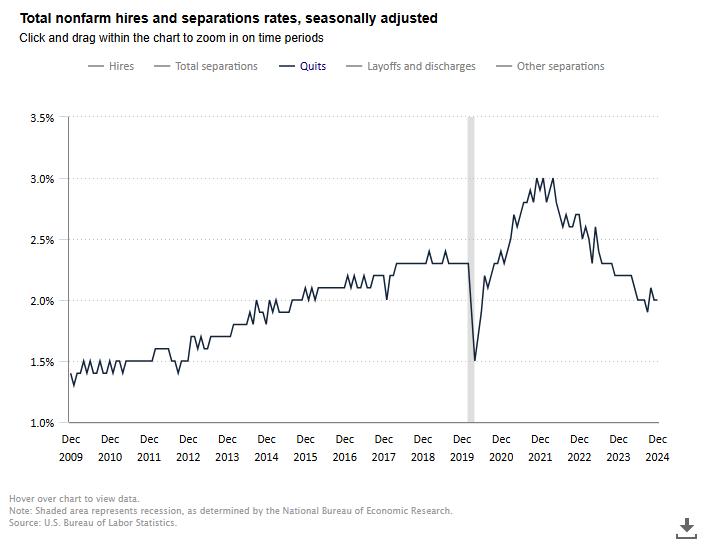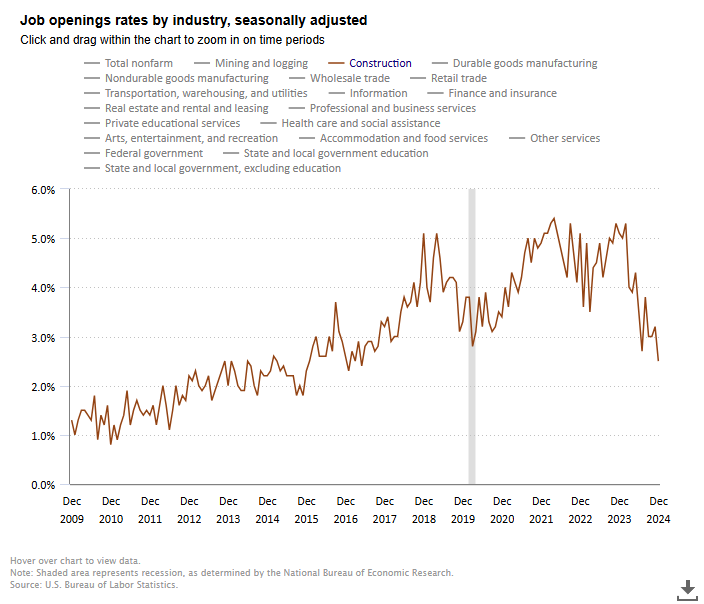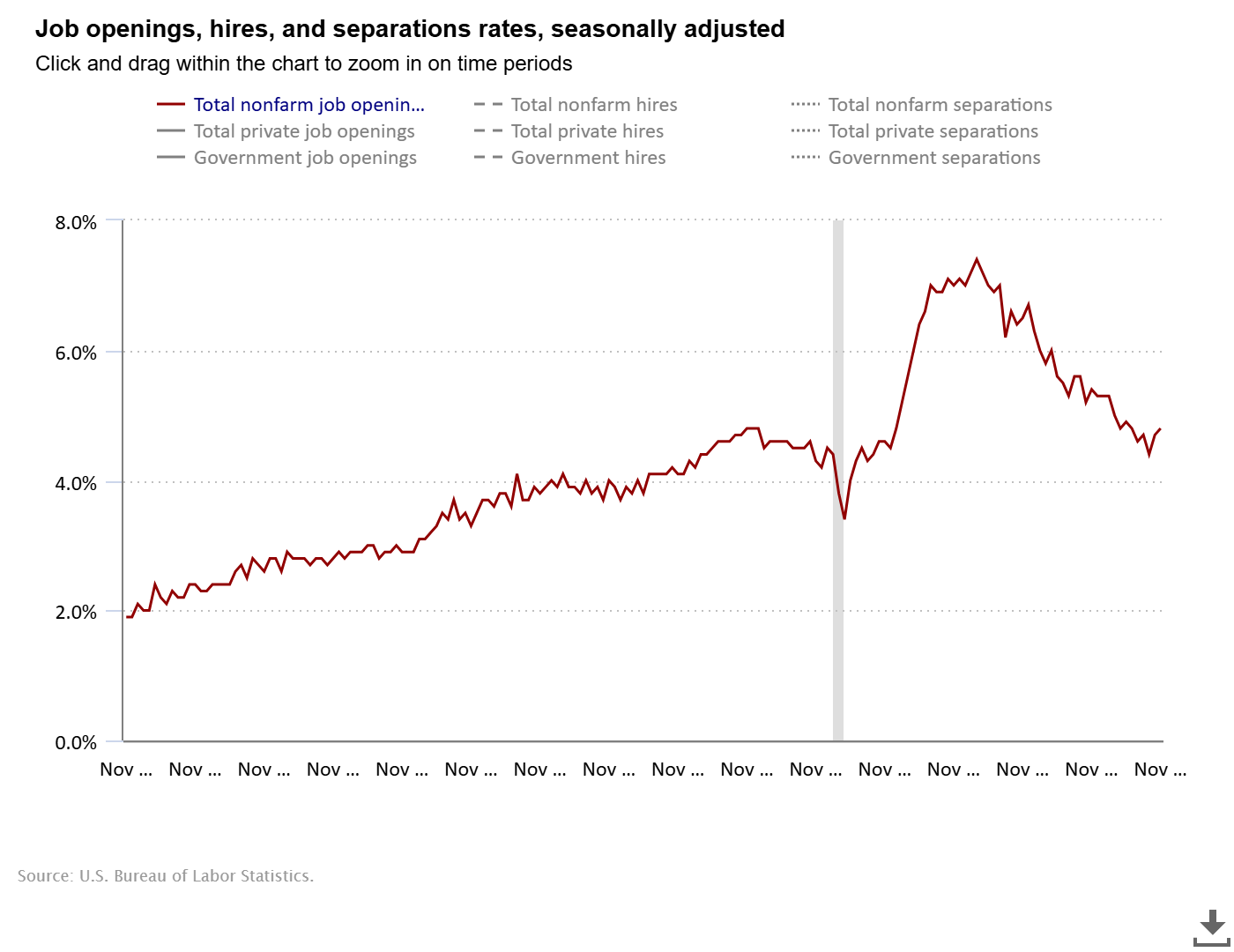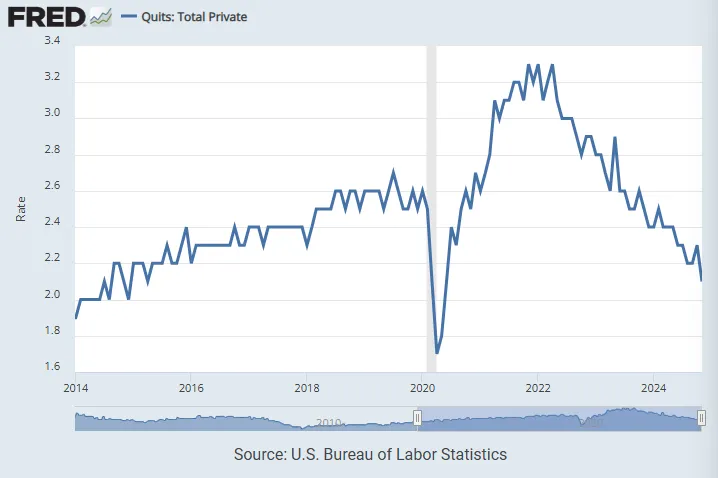The February JOLTS report highlighted the short-term volatility in labor market data and how difficult it is to distill short-term trends from month-to-month changes. However, it did not hide the general trend of a gradual cooling in the labor market which, for now, remains on solid footing despite Trump’s DOGE cutting federal programming.
Job Openings
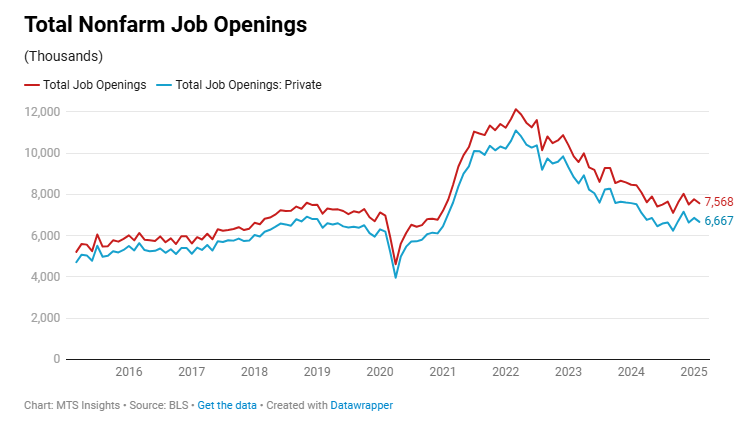
After a surprise bounce in openings in January, openings in February returned back towards levels seen at the end of 2024. Total US job openings fell -194k to 7.57 million in February, below expectations of a smaller drop to 7.63 million openings. The opening rate fell -0.2 ppts to 4.5%, identical to the reading in December 2024. Basically all of the decline in openings were in the private sector. Private openings fell -193k, and the openings rate was down -0.1 ppts to 4.7%. The government openings rate was unchanged at 3.7%, and interestingly, the federal government openings rate increased 0.2 ppts to 4.4% despite February being the first full month of Trump’s DOGE rummaging through federal programs.
There were some notable divergences across industries.
- The largest decline was in trade, transportation, and utilities where openings fell -163k (and the rate was down -0.6 ppts to 3.5%). However, the decline basically just reverted the job openings level back to December 2024 levels, suggesting this move could have been a month-to-month peculiarity. Within this industry, retail trade (-126k) and wholesale trade (-56k) fell the most, but again, both settled near December 2024 levels.
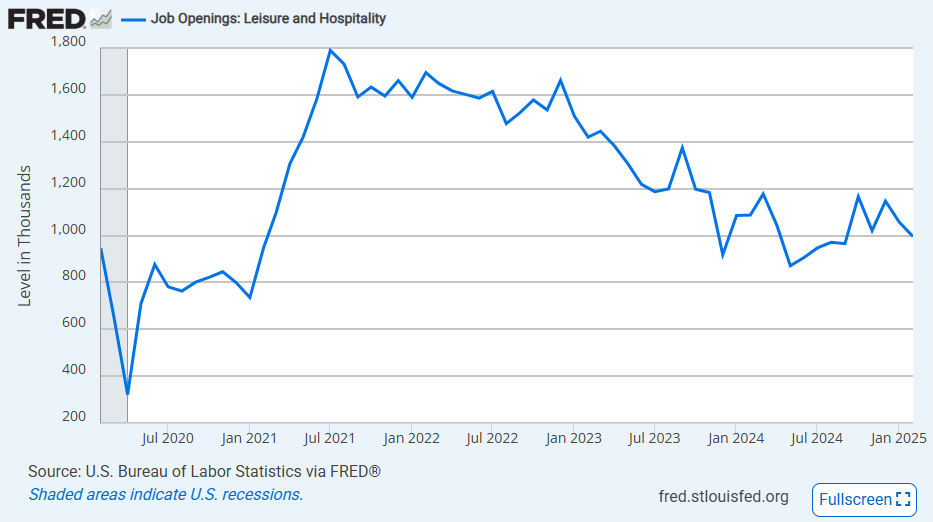
- The next largest declines were in two key services industries. Financial activities job openings fell -80k and the rate fell -0.8 ppts to 4.5%. The decline wasn’t a complete reversal of the January gain and financial openings are 30k above the December 2024 level. Leisure and hospitality openings was the next largest decliner, down -61k. Unlike trade and financial, this industry saw a decline in openings in January. Openings are down -101k from the December 2024 level, and the openings rate is down -0.8 ppts to 5.5%. It is also worth noting that leisure and hospitality openings are now at the lowest since September 2024, when the Fed made its most bearish assessment of the US labor market.
- The professional and business services industry saw the largest increase in openings in February, up 134k, and coincidentally, it saw one of the largest declines in January. The job openings rate for the industry bounced back 0.5 ppts to 5.6% and is just one tick below the 5.7% rate in December 2024.
Hires & Separations
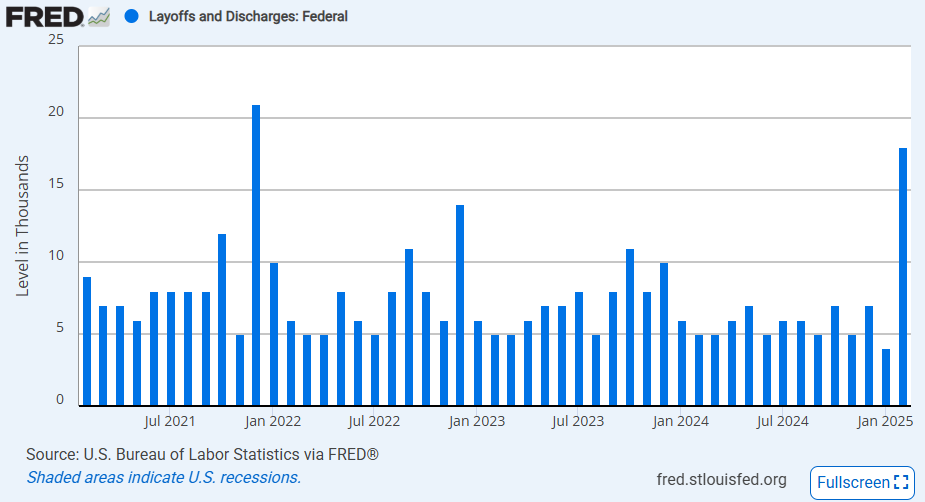
The data on hires and separations in February reflected the recent trend of inelasticity in the US labor market. Hires were up just 25k in the month with private hiring growth of 46k being offset by a decline of -21k in government hiring. While hiring growth was subdued, separations actually declined, down -11k as private separations fell -44k and government separations increased 33k. These two data points reflect some the impact of DOGE’s hiring freeze and initial workforce cutting. In both cases, the cooling in the government labor market countered the trend in a stronger private sector labor market. Notably, federal government layoffs & discharges increased 18k in February, the largest since December 2021. This is likely to continue in March and Q2 2025.
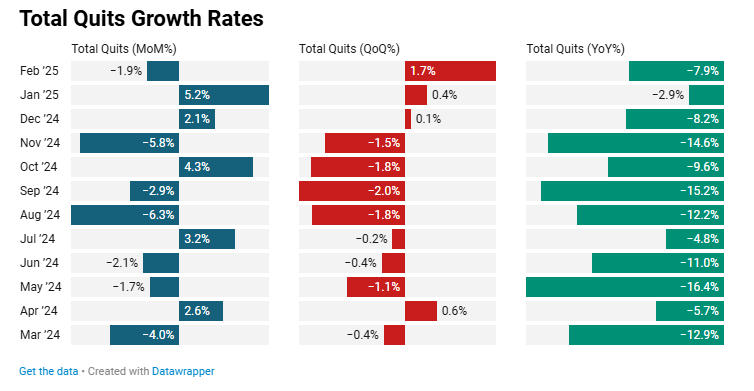
Within the separations data, there was a decline in quits in February, totaling -61k or -1.9% MoM, which was a slight reversal of the large increase in quits in January and December. This included an -80k drop in private quits and an increase in government quits of 19k. The private quits rate fell -0.1 ppts to 2.2%, but this was still above the November and December readings. Within industries, the data was noisy, but generally, the services industries reported a majority of the quits. The smaller decline in quits in February means that in the last quarter, quits have increased 1.7% QoQ after being down more significantly in Q4 2024.
| Indicator | YoY | YoY% |
|---|
| Private Job Openings | -854,000 | -11.4% |
| Private Hires | -231,000 | -4.4% |
| Private Separations | -231,000 | -4.5% |
| Private Quits | -278,000 | -8.5% |
| Private Layoffs & Discharges | 98,000 | +6.1% |
With Q1 2025 data being full of noise and government data affected by DOGE, it is important to look at a longer-term trend for a better perspective. In general, we have seen a substantial decline in private job openings over the last year representing a gradual decline in labor demand. However, while we have seen hires decline, we have also seen separations drop to the same degree. This suggests the labor market is still broadly in balance and there is not a major wave of layoffs occurring. Notably, total private quits have fallen by -8.5% which means that workers are increasingly uncertain about the job market, and they have less confidence in finding a new job upon quitting. Indeed, layoffs & discharges have increased noticeably over the last year, but not to a troubling degree.
Market Reaction
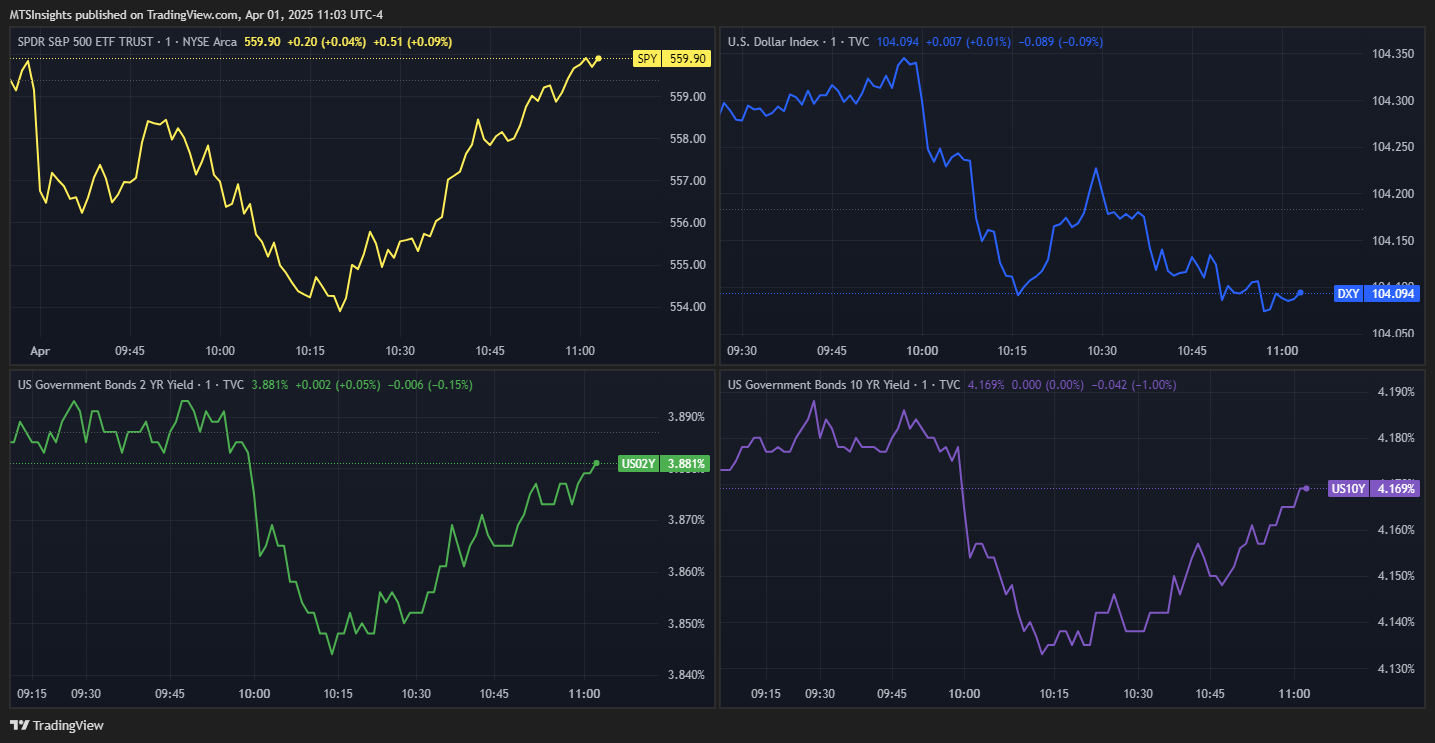
The February JOLTS data was seen as dovish by the market in trading immediately after the release at 10 am. The 2-year and 10-year Treasury rates both fell in the 15 minutes following the release, but both have more-or-less recovered from that decline. The same can be said for trading in SPY and the USD in that period. I wouldn’t really have expected this report to have a major impact on trading since tariff headlines and other macro reports will be weighing on investors as well.
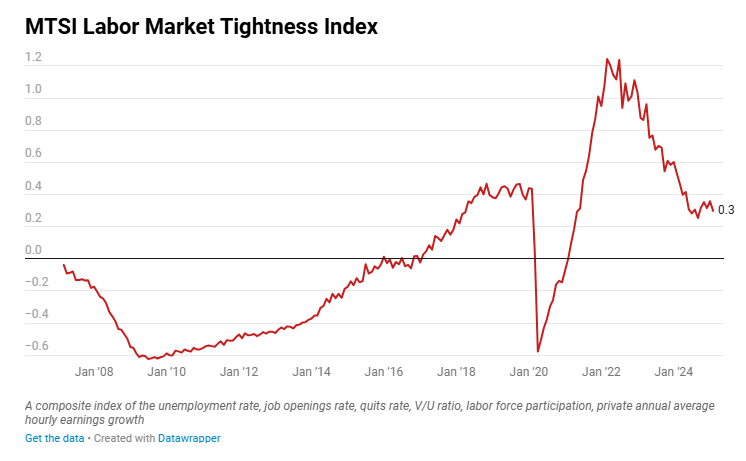
In the end, there is even less of a reason to react to today’s JOLTS data because it appears to be just a reversal of the January movements. My index tracking labor market tightness suggests that there hasn’t been a major change in job market conditions since the start of Q4 2024, and we are just seeing some of the short-term tightening trends unwind. Importantly, we are still above the index’s three-year low set in September 2024, the month when the Fed cut by 50 bps in response to the Fed’s assessment that the labor market was weakening and unemployment would rise through the end of 2024.
With that being said, February JOLTS data is mostly neutral for the Fed’s assessment of the labor market as it collects data for its May decision. The March JOLTS data will be more interesting as we will see the initial impact of tariffs on labor demand and the continued impact of DOGE which ramped up workforce cutting last month.
 JOLTS Survey
JOLTS Survey
